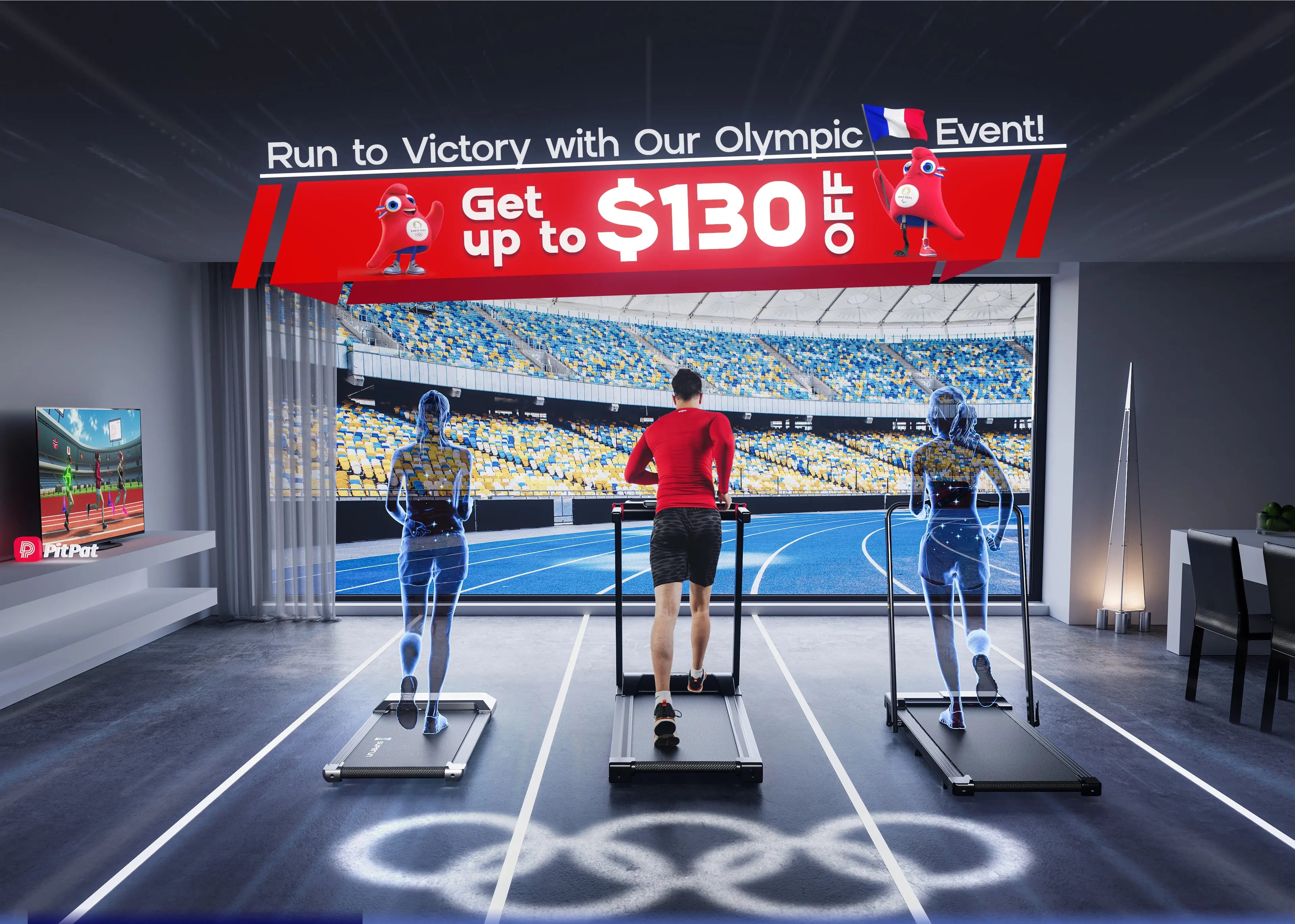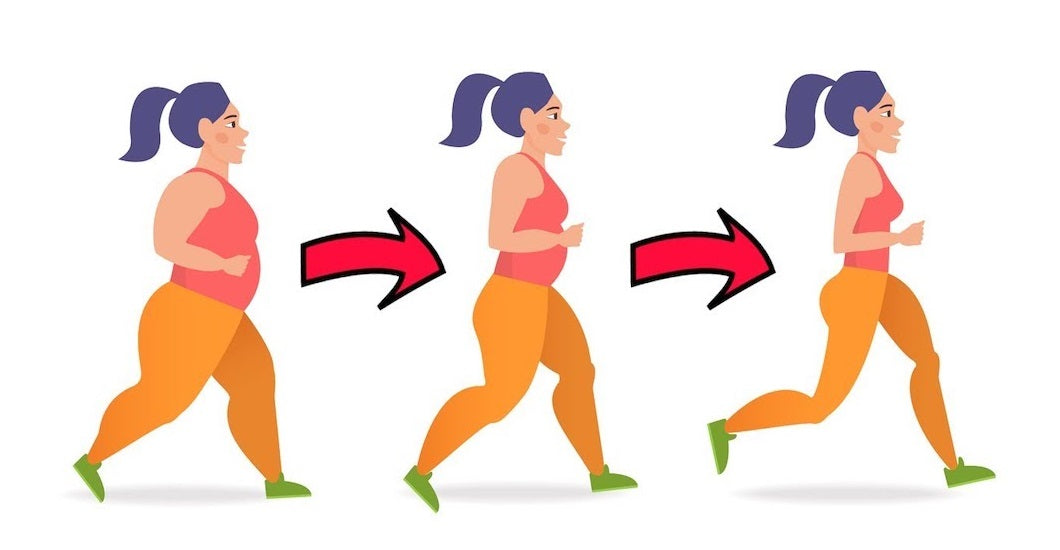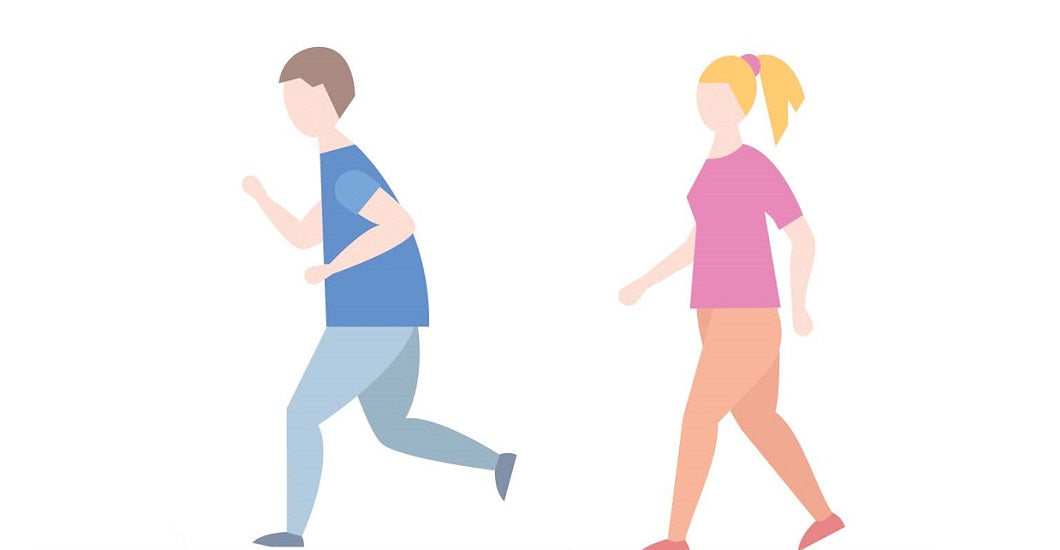A treadmill can help you lose weight, provided it is part of a well-rounded weight loss plan. Weight loss occurs when you create a calorie deficit, which means burning more calories than you consume. The treadmill can effectively burn calories and aid in weight loss, especially when combined with a balanced diet and other forms of physical activity.
Before losing weight on a treadmill, you need to get a suitable treadmill. SupeRun can provide you with different kinds of treadmills, including a smart treadmill that can link to a fitness app, a folding treadmill that can save space, 2 in 1 treadmill that is ideal for walking and running, etc.
Why do people want to lose weight?
There are some common reasons why people want to lose weight. These reasons are likely to be prevalent and enduring motivations for weight loss:
Health Improvement: Many people aim to lose weight to improve their overall health and reduce the risk of chronic conditions such as heart disease, diabetes, hypertension, and certain types of cancer.
Body Image and Confidence: Some individuals want to achieve a certain body shape or size to boost their self-esteem and feel more confident in their appearance.
Increased Energy and Vitality: Shedding excess weight can increase energy levels and improve physical fitness, allowing people to engage in daily activities more comfortably.
Enhanced Mobility: Losing weight can relieve pressure on joints, making it easier to move and reducing the risk of joint-related problems.
Medical Advice: Healthcare professionals might recommend weight loss to manage specific health conditions or address obesity-related issues.
Social and Cultural Norms: Societal pressure and cultural ideals of beauty can influence people's desire to attain a particular body weight or shape.
Improved Sleep: Losing weight can positively impact sleep quality and reduce sleep-related disorders like sleep apnea.
Preparation for Events: Some individuals may want to lose weight to prepare for a special occasion, such as a wedding, vacation, or reunion.
Increased Longevity: Weight loss and a healthy weight are associated with a longer life expectancy.
Fitness and Athletic Performance: Athletes and fitness enthusiasts may seek to optimize their performance by achieving an ideal body weight and composition.
It's important to note that motivations for weight loss can vary significantly from person to person. Some individuals may prioritize health and well-being, while aesthetic goals may drive others. Weight loss goals should always be approached healthily and sustainably, focusing on long-term lifestyle changes rather than quick fixes or extreme measures. If you're considering weight loss, it's advisable to consult with a healthcare professional or a registered dietitian to develop a personalized and safe plan tailored to your needs and health status.

Why treadmill can help you lose weight?
Treadmills can help you lose weight for several reasons:
Calorie Burning: Using a treadmill is a form of cardiovascular exercise, such as walking, jogging, or running, which helps burn calories. The number of calories burned depends on your weight, speed, and workout duration. Creating a calorie deficit (burning more calories than you consume) is essential for weight loss.
Accessible and Convenient: Treadmills are readily available at gyms, fitness centers, and even for home use, making them a convenient option for regular exercise. Their accessibility encourages consistent workouts, which are crucial for achieving weight loss goals.
Customizable Intensity: Treadmills allow you to adjust the speed levels to vary the intensity of your workout. Higher-intensity workouts can help burn more calories quickly and benefit weight loss.
Interval Training: Treadmills are ideal for interval training, which involves alternating between periods of higher intensity (e.g., running or sprinting) and lower intensity (e.g., walking). Interval training can boost calorie burn and increase your metabolic rate even after the workout.
Low-Impact Options: For individuals with joint issues or injuries, treadmills can provide a low-impact option for cardiovascular exercise compared to running on concrete or asphalt.
Motivation and Tracking: Many modern treadmills have features that allow you to track your progress, set goals, and monitor your heart rate. These features can keep you motivated and focused on your weight loss journey.
Consistency: Consistently using a treadmill as part of your exercise routine can help you stay committed to your weight loss efforts and create a habit of regular physical activity.
Combined with Diet: While exercise is crucial for weight loss, combining it with a balanced and healthy diet is essential. Treadmill workouts can complement your dietary efforts by increasing your calorie expenditure.
It's important to note that although treadmills can be effective for weight loss, they are just one tool in a comprehensive weight loss strategy. Successful and sustainable weight loss also involves making dietary changes, managing stress, getting adequate sleep, and maintaining a healthy lifestyle. Before starting any exercise program, it's advisable to consult with a healthcare professional or fitness expert, especially if you have any pre-existing health conditions or concerns.

How to lose weight on treadmill?
I will provide a detailed common training plan for weight loss on a treadmill. Remember that individual fitness levels, health conditions, and preferences vary, so consult a fitness professional or healthcare provider before starting any new exercise program. This plan is designed for beginners, but you can adjust the intensity and duration as you progress:
Week 1-2: Getting Started
Frequency: 3-4 days per week
Duration: 20-30 minutes per session
Warm-up (5 minutes): Start with a slow walk or light jog to warm up your muscles and gradually increase your heart rate.
Alternate Walking and Jogging (15-25 minutes):
- Walk briskly for 2 minutes.
- Increase the speed to a light jog for 1 minute.
- Repeat the walk-jog cycle for the duration of the workout.
Cool Down (3-5 minutes): Slow down your pace to a comfortable walk to allow your heart rate to gradually decrease.
Week 3-4: Increasing Intensity
Frequency: 4-5 days per week
Duration: 25-35 minutes per session
Warm-up (5 minutes): Same as in Weeks 1-2.
Interval Training (20-30 minutes):
- Walk briskly for 2 minutes.
- Increase the speed to a moderate jog or run for 2 minutes.
- Repeat the walk-jog/run cycle for the duration of the workout.
Cool Down (3-5 minutes): Same as in Weeks 1-2.
Week 5-6: Adding Inclines
Frequency: 4-5 days per week
Duration: 30-40 minutes per session
Warm-up (5 minutes): Same as in Weeks 1-2.
Incline Walk and Jog (25-35 minutes):
- Set the treadmill to a 1-2% incline and walk briskly for 2 minutes.
- Increase the incline to 5% and jog or run for 2 minutes.
- Repeat the incline walk-jog cycle for the duration of the workout.
Cool Down (3-5 minutes): Same as in Weeks 1-2.
Week 7-8: Increasing Duration and Intensity
Frequency: 4-5 days per week
Duration: 35-45 minutes per session
Warm-up (5 minutes): Same as in Weeks 1-2.
Interval Incline Training (30-40 minutes):
- Set the treadmill to a 2-3% incline and walk briskly for 2 minutes.
- Increase the incline to 8% and jog or run for 2 minutes.
- Repeat the incline walk-jog cycle for the duration of the workout.
Cool Down (3-5 minutes): Same as in Weeks 1-2.
Week 9-10: Endurance and Challenge
Frequency: 5 days per week
Duration: 40-50 minutes per session
Warm-up (5 minutes): Same as in Weeks 1-2.
Endurance Workout (35-45 minutes):
Set the treadmill to a 2-3% incline and jog or run at a steady pace for the entire workout.
Cool Down (5 minutes): Same as in Weeks 1-2.
Note: Throughout the training plan, remember to listen to your body, stay hydrated, and incorporate rest days for recovery. You can adjust the intensity, duration, and incline levels based on your progress and comfort. For a well-rounded weight loss approach, combine this treadmill training with a balanced diet and other forms of physical activity.
How do you lose weight scientifically?
Losing weight scientifically involves a combination of proper nutrition, regular physical activity, and healthy lifestyle habits. Here's a guideline to help you achieve your weight loss goals based on scientific principles:
Set Realistic Goals: Aim for gradual and sustainable weight loss. A safe and healthy rate is typically 0.5 to 1 kg (1 to 2 pounds) weekly.
Calculate Your Caloric Needs: Use an online calculator or consult a healthcare professional to determine your daily caloric needs based on age, gender, weight, height, activity level, and weight loss goals.
Establish a Calorie Shortfall: Your calorie intake should be less than what your body expends for weight loss. Create a caloric deficit of around 500 to 1000 calories daily through diet and exercise.
Adopt a Balanced Diet: Focus on a diet rich in fruits, vegetables, whole grains, lean proteins, and healthy fats. Cut down on consuming processed meals, sweetened drinks, and high-energy nibbles.
Exercise Portion Discipline: Pay attention to the size of your servings to prevent consuming too much, even when opting for healthier food alternatives.
Keep a Food Journal: Monitor your food intake to identify patterns, triggers, and opportunities for improvement. This can help you make informed decisions about your diet.
Stay Hydrated: Drink plenty of water throughout the day. Sometimes, feelings of hunger can be confused with thirst.
Avoid Fad Diets: Steer clear of extreme diets or quick fixes, as they are often unsustainable and may harm your health.
Include Regular Exercise: Engage in cardiovascular exercises (e.g., walking, jogging, cycling) and strength training (e.g., weightlifting) to burn calories, build muscle, and improve overall fitness.
Prioritize Rest: Strive for 7-9 hours of good sleep every night, as insufficient sleep can interfere with hormones controlling hunger and metabolism.
Manage Stress: High-stress levels can lead to emotional eating and weight gain. Discover wholesome methods to manage stress, like practicing mindfulness, engaging in yoga, or immersing yourself in the outdoors.
Seek Professional Support: Consult a registered dietitian or healthcare provider for personalized guidance and support during your weight loss journey.
Monitor Progress: Track your weight loss and celebrate small victories. Remember that weight loss may not be linear, and occasional plateaus are normal.
Stay Calm and Consistent: Achieving long-term weight reduction requires patience and dedication. Stay committed to your goals and maintain a positive attitude throughout the process.
Remember that individual responses to weight loss strategies can vary. What is effective for one individual might not be effective for another. Always consult a healthcare professional before significantly changing your diet or exercise routine, especially if you have any underlying health conditions.

Conclusion
A suitable treadmill can help you lose weight. Losing weight needs not only a treadmill but a scientific training plan. From a practical perspective, if you want an effective way of slimming, try to have the training schedule and the willpower.






Leave a comment
All comments are moderated before being published.
This site is protected by hCaptcha and the hCaptcha Privacy Policy and Terms of Service apply.